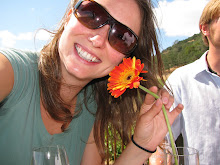Gender in Inuit Society
This chapter began with an introduction which explained some of the misconceptions about Inuit society and the position women held with in it. The chapter then goes on to explain how in reality, the house hold work was divided between the men and the women into complimentary work responsibilities. This provided equality in domestic relations, as the work done by one party was needed to insure the success of the second party and vise versa. Also, if the need should arise, men and women would perform the tasks of the others usual work. The way the family structures were organized varied depending on region. One main similarity, though, was the position of the ‘grandmother.’ Men generally had the say over women his age and younger, but everyone answered to the elder female. This was not to say that the women didn’t influence the men. A woman might advise her husband in private, or, during a meeting of men in her own household, might make a snide comment to the wall if her husband said something she did not agree with. Because women would talk amongst themselves and then make suggestions to their husbands, their votes would be recognized in a third party manner. Also, the men did not want to be embarrassed by the elder female at a large group meeting which also encouraged them to listen to their wives. The chapter ended with a description of how the Inuit believed that souls were ‘recycled’ and your personality could be born into either a male or female body.
Rank and Gender in Tlingit Society
This chapter discussed the culture of the Tlingit people of the northwest coastal tribes. Especially unique to this group, was their class structure based on wealth. Also, they were known for their strong women. These women were not well liked the by the missionaries and traders because they did not fit the European gender role of passive and submissive. Instead they resisted the idea that the white man’s god said that all women must obey their husbands and they were in charge of a lot of the trading and ran a hard bargain. Because the social structure was based on wealth, anyone, man or women, could rise up to the top of the society. Ideally, the poorest and lowest person could better their position to become one of the most important in society, but a lot of it had to do with how you were born into society, as a mother could increase her children’s rank. To show their social status, people would through potlatches were they would put on a big feast and give gifts to their guests. Another way a person could gain status was to become a shaman or a witch, either of which could be man or woman. This chapter also described how the marriage, clans, and family structure were organized. This part confused me a lot. If anyone who reads this understood how that worked, I would really appreciate it if you could try to explain it to me in a comment, because I am still very curious.
I think that the main purpose of these two chapters is to inform the reader on the position of women in the Inuit and Tlingit societies and to dispel any myths or preconceived ideas one might have heard about them. They are important to this class to show the diversity of different native populations and their societal structures throughout North America. I found both chapters to be very interesting reading and I would like to learn more, especially about the Tlingit, because I learned a little bit about them growing up and it is interesting to relearn it again, but with an adult’s perspective.
Klein, Laura P., and Dillan A. Ackerman. Women and Power in Native America. OK: Univeristy of Oklamhoma P, 1995. 17-45.
Subscribe to:
Post Comments (Atom)

No comments:
Post a Comment